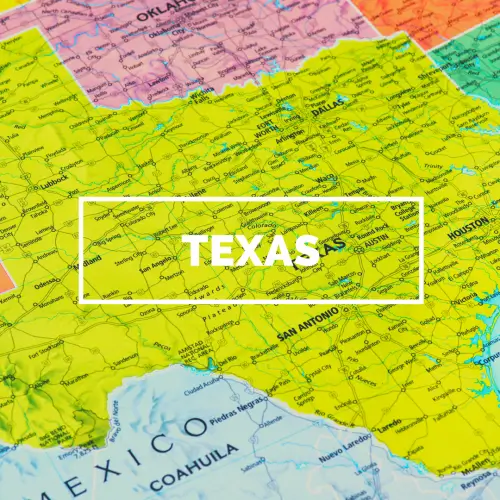Auto Transport Truckers: The Best and Worst Routes to Know

Lila Claybourne
Sep 30, 2024

Becoming an auto transporter is an exciting and rewarding career, providing opportunities to move vehicles across the country and cater to a growing industry. However, it requires navigating various legal, operational, and safety regulations to ensure compliance with federal and state laws. This guide outlines the key requirements needed to become a licensed auto transporter in the United States, helping you understand the steps necessary to start your business successfully.
If you're looking for a reliable auto transporter, companies like AmeriFreight can connect you with a network of professional, licensed, and insured carriers. Known for their excellent service, AmeriFreight ensures that your vehicle is transported safely and efficiently.
1. Understanding the Auto Transport Industry
Auto transporters serve a critical role in logistics by safely moving vehicles for individuals, dealerships, and businesses. Whether moving a car across town or across the country, auto transporters must be familiar with industry operations and the roles of various stakeholders.
Auto Transporters: These are the companies or individuals who physically transport vehicles using specialized trucks and trailers.
Auto Transport Brokers: Brokers act as intermediaries, connecting customers with transporters and managing the logistics. AmeriFreight, for example, serves as a trusted broker, ensuring customers receive the best service from certified carriers.
Car Shippers: These are the customers, including individuals or businesses, who need vehicles transported safely and efficiently.
Understanding the roles within this industry is key to succeeding as an auto transporter. Car shippers rely heavily on companies like AmeriFreight for peace of mind during the shipping process.
2. Licenses Required for Auto Transporters
Commercial Driver’s License (CDL)
To operate a vehicle capable of transporting cars, a Commercial Driver’s License (CDL) is required. Most auto transporters need a Class A CDL to operate large trucks capable of hauling multiple cars. Obtaining a CDL involves:
Completing a specialized commercial driving program.
Passing written and practical exams specific to your state.
Meeting medical standards for commercial drivers.
The Class A CDL is essential for safely and legally transporting vehicles on a commercial scale, ensuring compliance with state and federal laws.
Federal Motor Carrier Safety Administration (FMCSA) Registration
After securing a CDL, the next step is registering with the Federal Motor Carrier Safety Administration (FMCSA). This registration provides the necessary authority to operate as an interstate auto transporter. You must also apply for a Motor Carrier (MC) number, which confirms your eligibility to haul vehicles across state lines.
FMCSA registration ensures you are compliant with federal safety regulations, an essential step for any transporter, whether working independently or with a broker like AmeriFreight.
USDOT Number
The USDOT number is a crucial identifier for your business, used to track safety records, compliance reviews, and vehicle inspections. The USDOT number is required for vehicles that exceed a certain weight and for businesses engaged in interstate commerce.
3. Insurance Requirements
Insurance coverage is mandatory for all auto transporters. It protects not only the business but also the vehicles being transported.
Public Liability Insurance
Public liability insurance covers any damages or injuries caused to third parties during the transport process. This insurance is required by the FMCSA, and auto transporters must provide proof of coverage before obtaining their operating authority.
Cargo Insurance
Cargo insurance protects the vehicles in your care during transport. This type of insurance ensures that any damage to the cars is covered, providing peace of mind to your clients and guaranteeing vehicle safety from pickup to delivery. Please note that there are specific limitations on what is covered, so check with AmeriFreight for specifics.
4. Necessary Equipment for Auto Transporters
Auto transport requires the right equipment to ensure vehicle safety during transit. Your biggest investment will be in a commercial vehicle capable of hauling multiple cars.
Choosing the Right Truck and Trailer
Auto transporters typically use one of two trailer types:
Open Trailers: Commonly used for standard vehicle transport, these trailers can carry multiple cars but leave them exposed to weather and road debris.
Enclosed Trailers: Offering more protection, enclosed trailers are often used for transporting luxury or vintage vehicles.
Additional Equipment
To ensure vehicles are securely transported, you will also need:
Car Tie-Down Straps: These secure vehicles to the trailer during transport.
Wheel Nets and Chocks: These stabilize vehicles, preventing any movement during transit.
Using the right equipment is crucial for ensuring the safety of the vehicles you transport, and brokers like AmeriFreight ensure that all carriers meet these equipment standards.
5. Additional Legal and Compliance Documentation
Form BOC-3 (Designation of Process Agents)
Before beginning operations, all interstate carriers, brokers, and freight forwarders must file Form BOC-3 with the FMCSA. This form designates a process agent in each state where the transporter operates or travels, ensuring that legal documents, such as lawsuits, can be properly received. A process agent acts on behalf of the company for legal matters.
Filing the BOC-3 is also required if you work as a for-hire carrier and plan to apply for FMCSA authority, an MC number, trucking authority, or DOT authority.
MCS-150 Form
To maintain your registration, you will need to regularly update your information with the FMCSA using the MCS-150 form. This ensures that your business details and vehicle information are always current.
6. State-Specific Licensing Requirements
Each state has its own set of licensing requirements for auto transporters. While federal licenses are necessary for interstate transport, some states require additional permits. Checking with local transportation departments ensures you meet all state-specific regulations.
Intrastate vs. Interstate Operations
If you plan on operating exclusively within one state, your licensing requirements may differ from those of interstate transporters. However, many states still require a USDOT number, even for intrastate transport, depending on the size and weight of your vehicle.
7. How to Ensure Compliance and Maintain Legal Status
Compliance with state and federal regulations is not a one-time task. To maintain your legal status as an auto transporter, you must:
Regularly renew your insurance policies.
Keep your FMCSA registration up to date.
Conduct audits to ensure compliance with federal safety standards.
Staying on top of these requirements ensures that your business operates smoothly and legally. AmeriFreight, for example, works only with carriers that maintain full compliance with all legal and insurance standards, ensuring vehicle safety throughout the transport process.
Conclusion
Becoming an auto transporter involves navigating a complex web of licenses, insurance policies, and legal documentation. However, by following the necessary steps—including obtaining a CDL, registering with the FMCSA, securing a USDOT number, and maintaining adequate insurance—you can establish a successful and legally compliant business. Whether you're transporting cars as an independent carrier or working with a trusted broker like AmeriFreight, adhering to these regulations ensures a safe, reliable, and reputable operation.
Related Posts
















